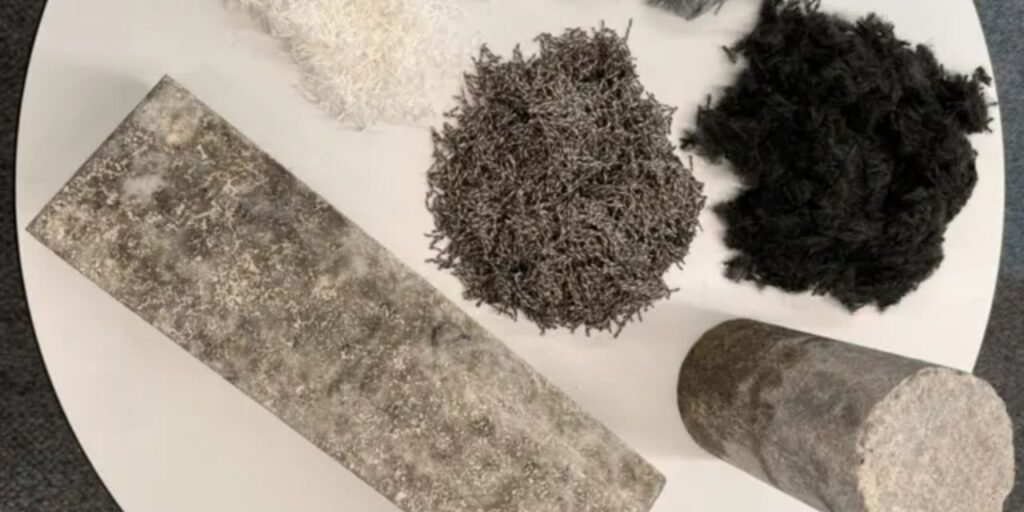
Researchers have used a surprise ingredient—scrap carpet fibers—to create concrete that is stronger and more durable. This novel method of converting discarded carpet fibres into a crucial component for crack-resistant concrete was found by RMIT University in Australia. Every year, Australia spends a substantial A$8 billion repairing damaged concrete buildings. In the meantime, concrete repairs cost the US an astounding US$76 billion a year.
This emphasises the necessity of creative approaches to stop and fix these fractures, which can erode structures and jeopardise safety.
“By significantly lowering shrinkage, scrap carpet fibres can be utilised to boost concrete’s strength by 40% in tension and avoid early cracking,” stated lead researcher Chamila Gunasekara.
30% less cracking
Early-age cracking is a significant problem in the building sector that is addressed by this creative solution. The new concrete composition increases durability and prolongs the life of structures by decreasing shrinkage. Remarkably, the new method decreased early-age concrete cracking by as much as 30%.
“A long-standing issue in construction projects is cracking in early-age concrete slabs, which can lead to premature corrosion and jeopardise a building’s structural integrity and safety in addition to making it look bad,” Gunasekara continued.
To yet, the researchers have used waste textiles to build laboratory concrete samples. The engineering and environmental requirements of Australian Standards were met by these textile-reinforced concrete samples.
Additionally, worn firefighting clothing may be recycled.
The researchers draw attention to the significant environmental cost of disposing of carpets and other textiles.
Synthetic materials including nylon, polyester, and polypropylene are frequently used to make carpets. These materials contain a variety of compounds, such as adhesives, dyes, and flame retardants. When burned, these chemicals decompose and release toxic gases into the atmosphere.
Furthermore, harmful ash and particle matter contaminate land and water when carpet debris is burned outside.
After the United States, Australia is the world’s second-largest consumer of textiles per capita. According to Gunasekara, the typical Australian buys 27 kg of new clothes and textiles annually and throws 23 kg away in landfills.
In order to improve concrete’s performance even further, the team is investigating the usage of textile waste beyond carpets, such as used clothing and firefighting equipment.
RMIT textile and material scientist Shadi Houshyar emphasised the difficulty of recycling firefighting gear. These materials’ durability and flame resistance, which make them firefighting heroes, also make them recycling villains.
